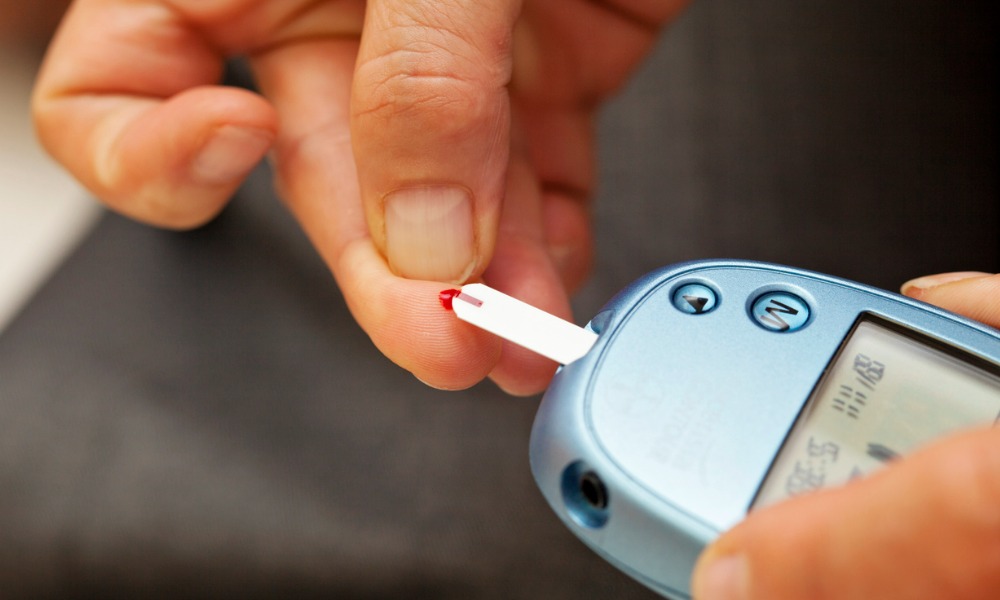Diabetes is one of the most common diseases worldwide. According to the World Health Organization (WHO):
- 422 million people worldwide have diabetes.
- 1.5 million deaths are directly attributed to diabetes each year.
- The number of cases and the prevalence of diabetes have been steadily increasing over the past few decades.
While lifestyle change will help protect you from the disease, blood glucose monitoring is the most effective way to manage it if you have already been diagnosed with type 1 or 2 diabetes.
In this guide, we dig deeper into blood glucose monitoring: the background and ways to achieve it.
The background: How a body reacts to glucose
Human blood carries glucose (sugar from the digestion of carbs and other foods) that provides energy to body cells. Excess glucose is stored in the liver as glycogen.
Insulin and glucagon are hormones secreted by the pancreas that work together to maintain blood sugar levels. Insulin helps decrease blood sugar levels, whereas glucagon helps increase blood sugar levels.
Too much or too little insulin and glucagon can cause blood glucose levels to rise too high (hyperglycemia) or fall too low (hypoglycemia). Your lifestyle is a crucial factor in maintaining proper levels of these hormones.
Meals and their effects
A good fasting blood sugar level is 99 mg/dL or less. Typically, blood sugar levels increase after eating a meal. In a non-diabetic person, the pancreas releases insulin, which accelerates glucose absorption from the blood and lowers the blood glucose level to normal.
About five hours after you eat, the blood glucose levels decrease, triggering the pancreas to produce glucagon. Glucagon signals your liver to convert stored glycogen into glucose and release it into the blood, bringing your blood sugar levels back to normal.
A struggle for people with diabetes
While this process occurs automatically for a healthy person, it’s a struggle for those with diabetes. If you have diabetes, your body’s production or use of insulin and glucagon is off, meaning you must regularly monitor and maintain your blood sugar level.
You can test and monitor your blood sugar level with a glucose meter and fingersticks or use continuous glucose monitoring (CGM) system. This second method has seen a significant increase in use in recent years.
The trend: What’s a continuous glucose monitor?

A continuous glucose monitor, or CGM, is a wearable technology that inserts a sensor under your skin to provide around-the-clock updates on your blood glucose levels.
How a continuous glucose monitor works
To understand how a CGM works, you’ll need to become familiar with its components. A typical CGM system has three main components: a glucose sensor, a transmitter, and a monitor.
Here’s how a CGM works:
-Inserting the sensor
A CGM sensor is a thin wire or a filament that you insert under your skin. To insert the sensor, follow these three steps:
- Put the sensor in the applicator: Most CGM systems have an applicator that makes it easier to apply the sensor to your skin.
- Choose sensor location: A sensor is generally applied on the back of your arm, your abdomen, or other locations per the manufacturer’s recommendations.
- Place the applicator: Position it on the skin and push the button to attach the sensor.
Once inserted, the sensor is held in place by an adhesive medical patch tape. These instructions may vary depending on the manufacturer and model.
-The sensor: Real-time measuring of your blood glucose levels
The sensor has a glucose-oxidase platinum electrode that detects the glucose level in interstitial fluids (glucose found in the fluid between body cells). The sensor takes the measurement every few minutes throughout the day.
-The transmitter: Conveying data from the sensor
A transmitter is an electronic circuit that receives signals and translates them into a form that can be broadcast over a distance using radio waves. It acts as the medium between the sensor and the receiver.
-The receiver: Receiving, translating, and displaying the data
A receiver connected to a monitor receives real-time glucose readings from the transmitter, translates them into a readable format, and displays the readings on the screen, smartphone app, or another smart device.
For optimal effectiveness, your sensor needs to be changed every 10 to 14 days. There are long-term sensors that are changed a few times a year, but these must be inserted and changed by your physician.
Benefits of using a continuous glucose monitor
CMG systems are the most effective method of blood glucose monitoring for people with type 1 and 2 diabetes. Compared to traditional self-monitoring of blood glucose (SMBG), CGM offers a range of benefits, including:
1. Real-time blood glucose report
The most effective way of managing diabetes is knowing your blood glucose levels condition at any given time. This data helps you act appropriately to ensure the glucose level stays in a healthy range.
Unlike a traditional SMBG, a CGM gives you a complete picture of your blood sugar level in real-time, around-the-clock. You and your doctor can see how diet, physical activity, weather, and other factors affect your glucose levels, and together, you can create a plan.
2. Improved quality of glycemic control
Glycemia refers to the concentration of glucose in the blood. Hypo- and hyperglycemia are results of unawareness. With real-time blood sugar level updates, CGM devices dramatically improve the quality of glycemic control in type 1 and type 2 diabetes.
3. Fast, proactive response
CGM systems take glucose readings every few minutes and send alerts when the levels are out of the recommended range. This way, you can know your blood glucose level is out of range before symptoms show and respond immediately.
4. Fewer fingersticks
CGM uses sensors connected to a transmitter and transmits readings wirelessly to the receiver. You can check your reading at any time with just a glance. The advanced technology significantly reduces the number of fingerstick tests associated with traditional glucose meters.

5. Lower A1C
An A1C or hemoglobin A1C (HbA1C) is a blood test that shows your average blood glucose level over the past three months. A lower A1C suggests an effective diabetes management plan.
According to a recent study, “people who used CGM achieved an average 0.35-point larger reduction in A1C and had a lower risk of hypoglycemia compared with people who didn’t use CGM.”
The main benefits of using CGM systems, such as early recognition intervention of hyper- and hypoglycemia, far outweigh the added cost associated with CGM. Do you agree? What other questions or comments do you have about CGM? Let us know in the comment section below.